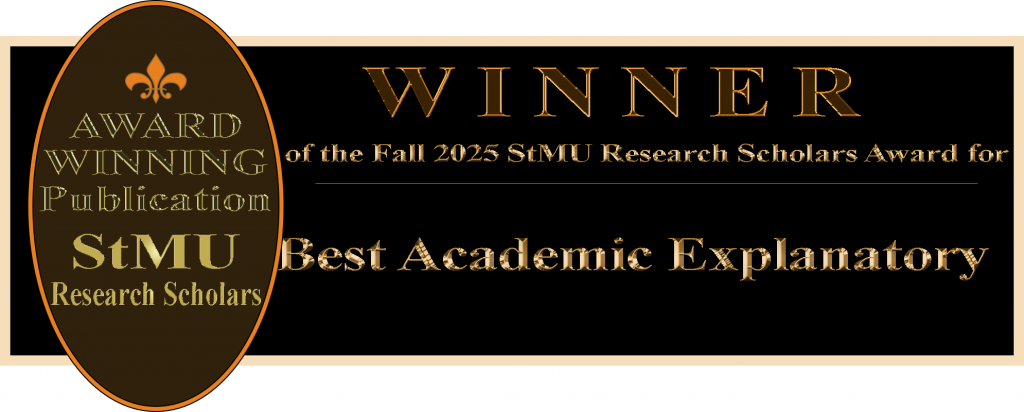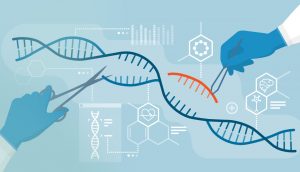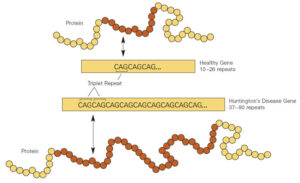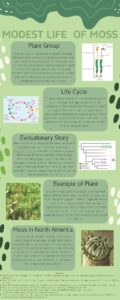
Introduction
Genetic technology has been a recent hot topic due to it being a rapidly evolving field, with new advancements being made every day. This type of technology is used to make changes to genes, which contain the instructions in all cells. As this technology continues to advance, a new question has been raised by scientists and ethicists alike. Where should society draw the line between healing and enhancement? To visualize the benefits of this technology, sickle cell anemia can be used as an example. Sickle cell anemia is a disease that changes the shape and, therefore, the function of hemoglobin, which is the protein that moves oxygen throughout the body. People who have this disease suffer

from immense pain due to the blood cells blocking small blood vessels in the body, but there is a case where gene therapy has helped patients eradicate their painful symptoms with a gene editing system called CRISPR-Cas9 1. This method also helps people who have thalassemia, which is a disease that affects the cells that produce hemoglobin. Additionally, this life-saving technology was also used more controversially when two twin girls were born with modified genes that made them immune to HIV 2. Despite that, the people in these scenarios are using genetic technology in a therapeutic sense, not as an enhancement, which would be changing one’s genes to be above the baseline of what a typical person should be. However, if one looks through the lens of the Catholic Intellectual Tradition (CIT) and the GEM ethical framework (Experience, Understanding, Judgment, Decision), it would be argued that genetic technology should be limited to therapeutic use. Genetic technology should be limited to therapeutic use because enhancement goes past the goals of medicine, risks inequality, and challenges moral and social values.
How Genetic Technology Works
Genetic technology involves different methods to edit genes, such as using enzymes to cut and paste pieces of DNA together. A way to edit genes that has been heavily researched recently is CRISPR. This method was discovered by Jennifer Doudna and Emmanuelle Charpentier, and they received a Nobel prize for it 1. CRISPR-Cas9 (CRISPR-associated protein 9) is a protein that functions like a pair of molecular scissors. It is guided by RNA to identify and cut specific sequences in DNA to either cut out mutated parts or insert correct gene sequences. This method is originally found in a system that bacteria use as an immune mechanism. When bacteria are infected with viruses, they cut a small part of the viruses’ DNA and insert it into their own DNA in a specific pattern 4. Currently, CRISPR has reached the stage of clinical trials. A study led by Vertex Pharmaceuticals and CRISPR Therapeutics indicated that fifteen of the participants with thalassemia received gene therapy that corrected the mutated hemoglobin gene. These patients, who once required monthly blood transfusions, no longer need them and now lead regular, healthy lives.
While this technology has many advantages, it is not perfect. Some of the limitations include unintentional mutations, mosaicism, and difficulties performing complex gene modifications 5. Due to genes being sensitive and often affecting one another, a change in one gene can potentially lead to a cascade of unintentional changes in other genes. Additionally, altering genes can cause effects in future generations, which would not be fair to them since they did not consent to the changes. Due to the complex matter that is at hand, there have been many moral and safety concerns being brought up. While the usage of genetic technology seems promising, it is important to investigate what the misuse of it can cause both biologically and ethically.
Promise of Genetic Therapy
Genetic therapy has been one of humanity’s greatest achievements, due to allowing people to have access to the ability to heal diseases by addressing the root cause. Many individuals have inherited disorders such as sickle cell anemia, Duchenne muscular dystrophy, and cystic fibrosis. Gene therapy can serve as a beacon of hope for these people if previous treatments have failed to alleviate their symptoms. This goes hand and hand with the ultimate mission of medicine, which is to have a moral duty to aid in relieving suffering.
CRISPR technology has many advantages that make it a versatile gene editing tool. One of the biggest advantages is that it is extremely precise. Techniques that were used before the discovery of CRISPR, such as zinc finger nucleases or Transcription activator-like effector nucleases (TALENs), could not be easily guided using short RNA molecules. Since CRISPR can be guided by RNA, this has allowed researchers to find ways to edit genes without altering unrelated genes. This minimizes off-target effects and increases safety. A second advantage is that CRISPR is versatile and efficient because it can be used in any organism, and it can delete, fix, or insert genes relatively easily. Lastly, CRISPR is fairly cost-effective and accessible. This will allow many labs to do more research and accelerate the development of cures for a variety of diseases, and increasing accessibility will make gene therapy more equitable over time, since everyone will have the chance to access it.
To take a closer look at the ethical benefits of gene therapy, Lonergan’s GEM framework can be used to analyze gene therapy ethically. The experience would be encountering human suffering caused by a genetic disease. One would then understand that it would be compassionate to allow science to intervene. The judgment would be to evaluate therapy as morally just to allow an individual in pain to have access to care. This would lead a person to the decision to support technology that helps heal people without tarnishing their dignity. Therefore, genetic therapy is both scientifically and ethically good when people do not use it to attempt to surpass the limits of mankind.
The Ethical Line
Despite the good that genetic technology can bring, it can also tempt humanity to outperform others. Genetic enhancements are interventions that improve a person’s function even though they did not have the medical need to do so 6. Philosophers like Glannon argue that genetic enhancement alters the goal of medicine by changing the idea of healing into making someone perfect.

Many ethical dilemmas arise when considering the use of genetic enhancement. One of the most pressing concerns is its potential to make social inequality worse than it already is. Genetic enhancement would likely be expensive, so it would realistically only benefit those with the financial ability to access it. It would be unjust for wealthier individuals to afford genetic modifications that make their children have more qualities that are deemed valuable in society, such as intelligence or beauty, while others do not have the same opportunities 7. If the upper class were able to enhance their children’s intelligence, the lower class would be left at an even greater disadvantage. These disparities could solidify existing hierarchies, making it more difficult for people from disadvantaged backgrounds to overcome systemic barriers.
As Glannon explains, individuals who possess enhanced traits would probably have significant advantages in employment, income, and social standing 7. This concern is rooted in current societal values, where these qualities are rewarded. Therefore, only allowing a certain group to have the ability to genetically optimize these traits would strengthen the privilege among the wealthy. Since not everyone could afford enhancement, it would be unethical to only allow a specific class of people to benefit.
Another major ethical issue is the potential loss of autonomy. Genetically programming traits could undermine an individual’s sense of self and moral agency 7. By manipulating parts of an individual’s personality or intelligence, enhancement could produce people whose behaviors and values no longer come from their own choices. They might lose authenticity and start acting due to the way they were engineered to think rather than freely developing their own thoughts and opinions. Glannon argues that healthcare should help to meet basic human needs rather than create competitive advantages 7. If people could have the ability to modify genes in order to enhance intelligence or beauty, people’s identities could start depending more and more on engineered traits rather than personal experiences, relationships, and growth.
Additionally, a loss of autonomy would also mean a loss of moral development. People depend on learning from their experiences and mistakes to know what is right and wrong. Even if people use enhancements to promote positive traits like empathy, they could still reduce autonomy. Again, it would not be their true personality because they would be acting more like mindless robots programmed to act a certain way, rather than a human being with unique and personal thoughts and emotions.
Catholic & Humanistic Perspectives on Human Dignity
The CIT allows people to look at genetic technology from a more moral point of view. An important part of this tradition is to constantly have a person’s dignity in mind. Dignity is not something that a person has to earn; rather, it is something intrinsic that we all have just due to the fact that we are human. When viewing science from this perspective, it is evident that science and faith work hand in hand. Science aids in making sense of the world by discovering and understanding the mechanisms found in the world, while faith helps discover the moral meaning behind all of it.

Every person, regardless of any condition they may have, has intrinsic worth. Additionally, humans were put into this world to be co-creators. God gave humanity all the tools and materials in order to solve issues that are affecting their fellow brothers and sisters. This means that if people are suffering, humanity must see them as a neighbor and aid in alleviating any suffering that they may be experiencing, because at the end of the day, the way that people treat the less fortunate is the way they treat Christ. The parable of the goats and the sheep can be used as an example to deepen the understanding of this concept. It explains that once Christ returns, He will separate individuals as the righteous (sheep) and the wicked (goats). Those who helped the poor and sick will be rewarded by going to heaven, while those who did not will be punished 11. Thus, expanding research and access to genetic therapy is part of humanity’s moral calling.
While genetic therapy can be viewed in a positive light using CIT, genetic enhancement is viewed negatively. Genetic enhancement risks people reducing others’ value to the biological traits that they have. CIT teaches that human worth is not valuable just based on someone’s physical or intellectual qualities. It teaches that imperfections are worthy of being accepted and should be. Genetic enhancement would prevent this from happening because more and more people would have access to becoming “perfect,” and diversity would decrease. Additionally, enhancement risks parents being able to tailor their children specifically to what they want. This would taint the teachings of loving everyone for who they are.
Another morally negative impact enhancement would have is undermining solidarity. Society progresses when everyone comes together to solve issues with compassion and collaboration, not through genetically engineered improvements and competition. Both CIT and morals can aid bioethics to maintain the goal of working toward improving everyone’s lives, not becoming superior to one another. Individuals should not focus on perfecting the genome; instead, they should focus on perfecting a just and compassionate way of helping others.
Conclusion
Genetic technology remains one of the most important tools that people have discovered. The ability to utilize genetic technology as a therapeutic tool can help medicine achieve its goal of providing care that heals, restores, and protects life. However, when used as a way to enhance, it will not only make medicine drift away from its goal, but also move humanity’s attention away from its moral duties to help others. When looking at this issue through the lens of the CIT and GEM framework, it becomes clear which is the correct moral path. After encountering suffering and having the ability to develop technology to help alleviate the pain, people can observe the difference between serving the less fortunate and becoming unrighteous. The future of genetics should not focus on perfecting the human genome. It should focus on spreading access to care that many need to live comfortable lives. If individuals embrace genetic therapy rather than enhancement, society could keep advancing in a way that is compassionate towards all.
- Daley, J. (2021, October 26). Four success stories in gene therapy. Nature News. https://www.nature.com/articles/d41586-021-02737-7 ↵
- Raposo, V. L. (2019). The first Chinese edited babies: A leap of faith in science. JBRA Assisted Reproduction. https://doi.org/10.5935/1518-0557.20190042 ↵
- Daley, J. (2021, October 26). Four success stories in gene therapy. Nature News. https://www.nature.com/articles/d41586-021-02737-7 ↵
- Boti, M. A., Athanasopoulou, K., Adamopoulos, P. G., Sideris, D. C., & Scorilas, A. (2023). Recent advances in genome-engineering strategies. Genes, 14(1). https://doi.org/10.3390/genes14010129 ↵
- Flora, A. (2025). CRISPR Genome Engineering: Advantages and Limitations. Taconic Biosciences. https://www.taconic.com/resources/crispr-genome-engineering-advantages-limitations#:~:text=Despite%20its%20advantages%2C%20CRISPR%2FCas9,in%20achieving%20complex%20genome%20modifications ↵
- Pavlovic, S., Ugrin, M., Gasic, V., & Rakic, V. (2023). Using genetics for enhancement (liberal eugenics). Clinical Ethics At the Crossroads of Genetic and Reproductive Technologies, 347–379. https://doi.org/10.1016/b978-0-443-19045-2.00008-8 ↵
- Glannon, W. (2018). Genes and Future People, 94–100. https://doi.org/10.4324/9780429500237 ↵
- Glannon, W. (2018). Genes and Future People, 94–100. https://doi.org/10.4324/9780429500237 ↵
- Glannon, W. (2018). Genes and Future People, 94–100. https://doi.org/10.4324/9780429500237 ↵
- Glannon, W. (2018). Genes and Future People, 94–100. https://doi.org/10.4324/9780429500237 ↵
- The Holy Bible: New International Version. (2010). BibleGateway. https://www.biblegateway.com/ (Original work published 1978) ↵



